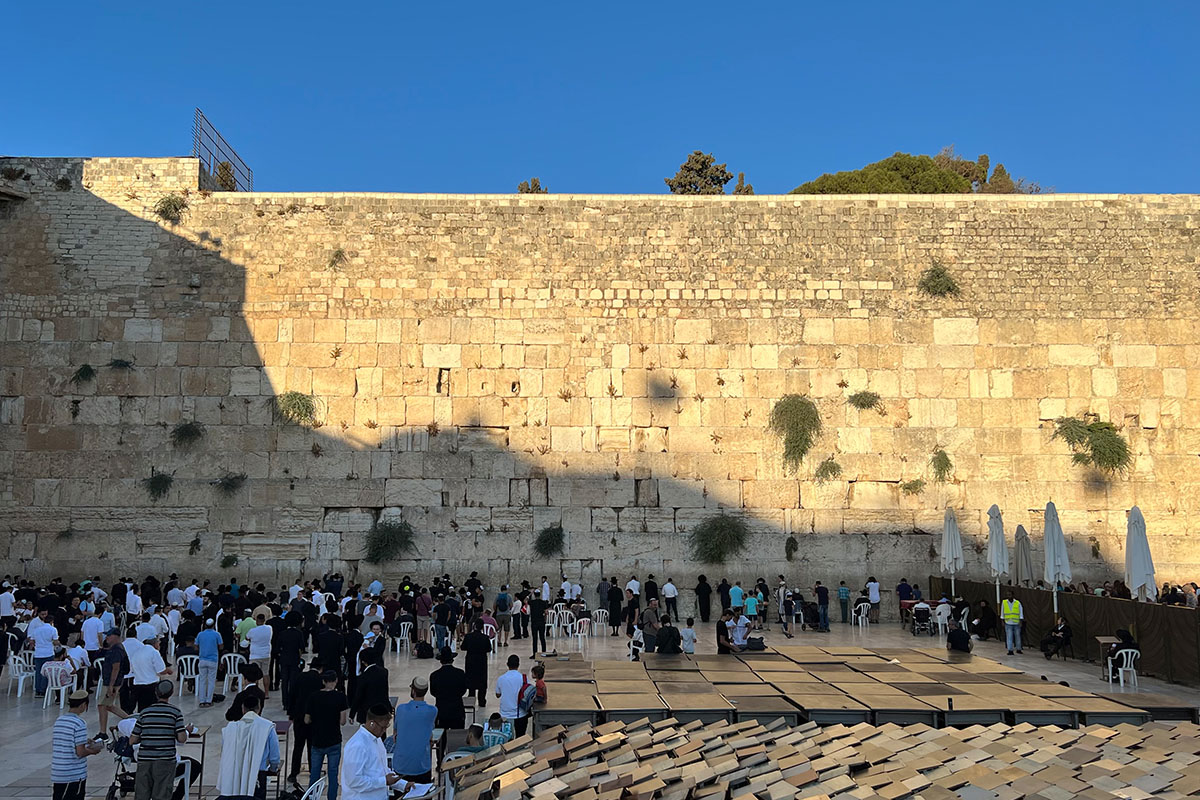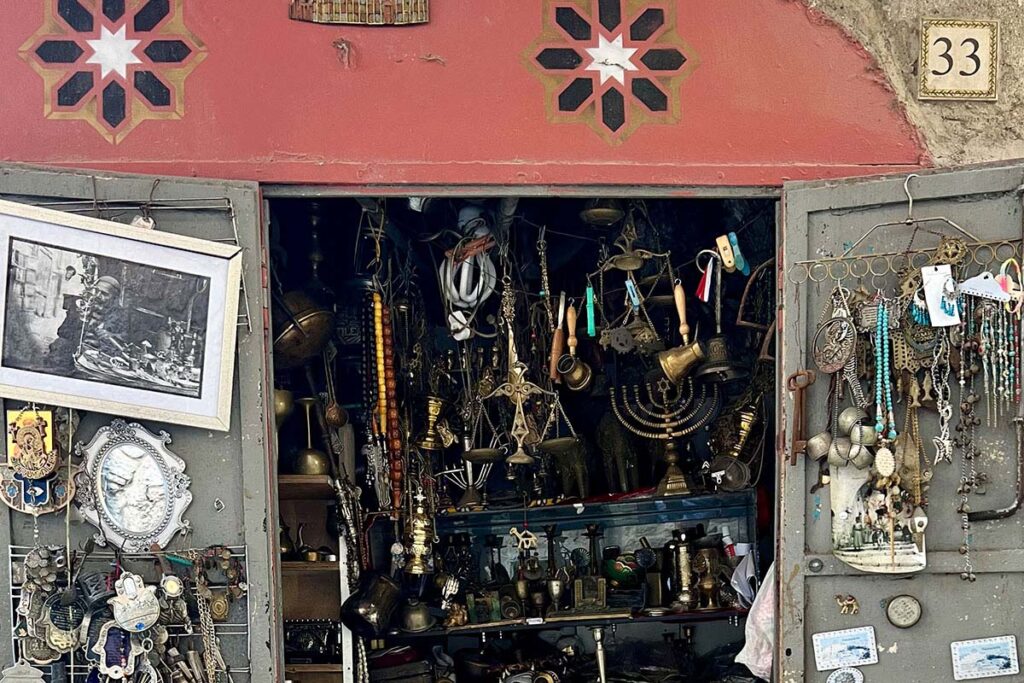With thirty three locations across the mediterranean, Leon Avigad has established Brown Hotels within the boutique hotel industry
Sunset in Jerusalem
We left the Old City to walk to the Mount of Olives. Leaving the City of David on our right, we continued to the Jewish cemetery, which runs along the side of the mountain. It is a 3,000-year-old cemetery, in use since the time of the First Temple – 70,000 dense graves. We went up, to the left Gethsemane. Turning around, the fireball was about to descend behind the city. We passed the last steps and witnessed the spectacle, and the meuzins called.
Local Jerusalem stone
Jerusalem of gold, copper and light. At sunrise and sunset, the city takes on a golden hue that has earned it this designation. This is due to the Jerusalem stone. There is not just one, but at least 17 different types. The main one used to build the Israeli city and the Western Wall is grey gold. From the time of the British Mandate until the present, municipal laws in Jerusalem require that all buildings built in Jerusalem be faced with local Jerusalem stone. But long before the British Mandate the stone was used as cheap local stone.
The buildings in the old city are made of solid stone and those in the modern city are made of concrete, but they are covered with stone. This stone has also become one of the symbols of the Jewish state, and can be found in the buildings of major Jewish or Israeli institutions around the world, such as on the premises of the Israeli Embassy in France. Another example is the Holocaust Memorial in Miami Beach, built of Jerusalem stone.
The study of geological strata has revealed that the stone has formed naturally in this region since Cenomanian times. It is a sedimentary stone that forms at the bottom of lakes and seas by accumulation. Heat and pressure cause chemical reactions to occur and harden into a solid stone called limestone. The changing tones of limestone are perfect for what today’s luxurious and comfortable lifestyles is associated to – where neutral colour seems to guarantee the essentiality defined by Mies Van Der Rohe. No garish colours, no disconcerting visual impact.
The Brown JLM Mamilla – where is located
Stones are everywhere you look: in the streets, in the architecture of houses, in the walls of shops, on some public benches and on the gates and walls surrounding the old city. Jerusalem stone also covers the impressive façade of the Brown JLM Mamilla hotel, overlooking the Garden of Independence and the new Museum of Tolerance, close to the Nahalat Shiva pedestrian mall on one side and the Mamilla shopping centre and the Old City walls on the other.
The Brown JLM Mamilla – external and interior design
The Brown JLM Mamilla is housed in a preserved and restored 19th century historic building, on which six new hotel floors were built. The design of the hotel was created by artist-architect Prof. Yossi Friedman, in a style that combines Jerusalem motifs from the past and the future. Painted ceilings have been preserved in the lobby. Stone tiles tell the story of Jerusalem, along with designer and vintage objects collected from the city’s markets and displayed throughout the hotel.
Friedman also designed the 46 rooms in a modern urban style. Most rooms overlook the Independence Garden and the new Museum of Tolerance, and some have balconies. The Brown JLM Mamilla also offers spa services and features a rooftop bar and a restaurant serving contemporary Israeli cuisine – Ruhan
The Brown group
Brown Jerusalem is a part of the Brown group, who has boutique hotels across the world. Brown currently has thirty-three locations across Israel, Greece, Germany and Croatia, with another two under construction – one in Greece and one in Cyprus.
Leon Avigad
Avigad built himself up from the bottom: starting as a bellhop. His first venture into his own hotellerie was Brown TLV Urban Hotel, located in Tel Aviv. Rooted in their devotion to service, design, innovation and style, the Brown group expanded across several countries.
Résumé of a long story
Jerusalem has always been in the middle of two superpowers. From the South, ancient Egypt. From the North came the Assyrians, the Babylonians, the Persians, and after that the Macedonians and Alexander the Great, who died young at the age of thirty-two and left his kingdom to his two friends, who were fighting with each other all the time. In Israel, the Temple House had gold from the people who paid to maintain it. They paid the taxes to the priests to hold it.
In 166 B.C. the Maccabees took power. Hanukkah is celebrated today, because of the miracle that the Maccabees performed in The Temple House inside the Temple Mount, that had been cleaned and restored again: the Maccabees lit the Menorah again using just the olive oil they found in a jar, and that same oil was enough to keep the Menorah lit for eight days. Hanukkah is celebrated with nine branches — one branch higher in the middle.
63 B.C. the Roman empire came. In the beginning they didn’t rule by themselves, but they used local rulers on their behalf. One of them was King Herod the Great, who ruled from 40 B.C to 4 B.C.; when he died, he left the kingdom to his sons. Since the Romans didn’t like how his sons were ruling, they brought governors to Jerusalem to do the job, but they were corrupt and asked the people to pay taxes.
May 1948, the date of the Declaration of Israel
In 66 A.D. The Jewish decided they had enough and started a rebellion against the Romans that continued until 70 A.D., when Vespasian and Titus invaded Jerusalem, including the Temple that Herod restored. After that, in 134 A.D. another Roman Emperor, Adrian, was having problems with the Jewish again. At that time, he decided to demolish Jerusalem and rebuild it completely. In 136 A.D. Jerusalem became Ilia Capitolina, until the Seventh century when the Muslims invaded the area, staying here until the Eleventh Century.
After the Eleventh Century the crusaders came from Europe to save Jerusalem and stayed here for almost three hundred years. In 1291 the Muslims came back until the Sixteenth Century, when the Ottoman Empire invaded Israel. In 1917 the British came, until May 1948, the date of the Declaration of Israel.
Brown Jerusalem
Brown Hotels, an international hotel brand was founded in Tel Aviv, with sister hotels located in the city of Tel Aviv (the world acclaimed Brown TLV, Brown Beach House, The Lighthouse, The Dave, and new properties opening soon) and Trogir, Croatia (Brown Beach House Croatia). Founded in 2003 by Hotelier Leon Avigad, Brown Hotels evolved out of the desire to introduce a collection of truly boutique hotels to Israel. The Brown properties are all rooted in a devotion to service, des ign, innovation, style and authenticity. Brown Hotels are often recommended by the world’s leading international lifestyle, design and travel publications.




















